Beskrivelse

Det tar mye tid for oss å klargjøre disse B-roll-dukene, så husk alltid å ta kontakt med oss før du eventuelt klipper duken om du ikke skal være fornøyd da vi ofte har noen gode tips og triks om det skulle være noe du reagerer på.
NB! BEGRENSET ANTALL TILGJENGELIG! KUN FOR SALG I NORGE!
På første produksjonsparti av UltraWeave V6 har vi hatt en del ruller med litt mye krøller som følge av litt for svak innpakning, samt noen mindre limflekker som dermed gjør at disse ikke kan selges internasjonalt som er hovedmarkedet for disse lerretene. Disse problemene er for øvrig løst i siste "PRO XXL" produksjon.
Nå kan du imidlertid sikre deg en av disse "B-ROLL" dukene til kraftig rabattert pris. Hvis du ikke er fornøyd, sender du oss bilde av duken klippet opp vertikalt, og får refundert hele kjøpesummen, så ingen risiko! NB! TA IMIDLERTID ALLTID KONTAKT MED OSS FØR DU KLIPPER DUKEN!
Dukene med litt krøller kan du som oftest rette ut selv ved bruk av et dampstrykejern (laveste varme, så mye damp som mulig). Skulle det forekomme noe små flekker kan du også retusjere disse ved å forsiktig tegne over med en matt hvit fargestift, men som oftest vil disse ikke være synlige uansett.
Se størrelse i produktangivelsen!
Universale festelister som passer alle DreamScreen UltraFrame V4, V5 og V6 rammer uten bruk av lim, samt alt av DIY eller retrofitting av øvrige alurammer ved bruk av lim kan kjøpes som tilbehør (se under tilbehørsfanen). Vi anbefaler Casco Xtremfix lim for festing av listene, se under tilbehør.
 Nytt egendesignede verktøy "UltraTucker" er nå tilgjengelig som tilbehør (se under TILBEHØR / RELATERTE PRODUKTER-fanen). Verktøyet sikrer rask og stabil installasjon av lerretsduken ned i våre universale festelister (grip rails) og anbefales på det sterkeste!
Nytt egendesignede verktøy "UltraTucker" er nå tilgjengelig som tilbehør (se under TILBEHØR / RELATERTE PRODUKTER-fanen). Verktøyet sikrer rask og stabil installasjon av lerretsduken ned i våre universale festelister (grip rails) og anbefales på det sterkeste!
Informasjon fra produsent

NÅ PATENTERT I USA! Den unike teknikken benyttet for produksjon av UltraWeave V5 og V6 har nå blitt godkjent som patent i USA! Dette gjør at DreamScreen, som er AVshops eget inhouse varemerke, kan bruke enda flere ressurser på utviklingen av disse fantastiske lydtransparente lerretsdukene. Neste målsetning er å øke max-størrelsen fra 2 til 3m høyde (dvs. bredde fra dagens max på 4,3m opp til ca. 7,2m), og etterhvert satser vi også på å kunne tilby disse lerretsdukene til store, kommersielle kinoer med bredde på 20m eller mer!
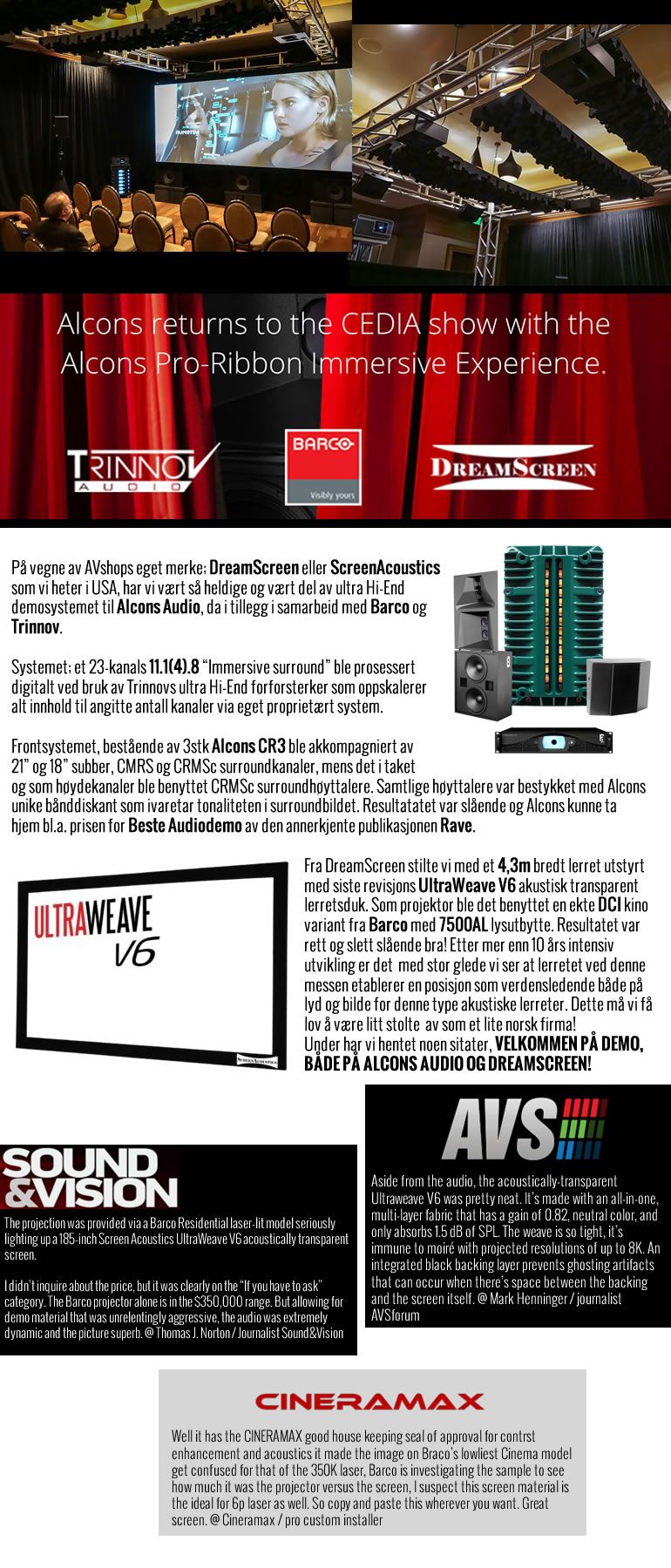
Nytt ved denne generasjonen er bl.a. 30% finere strukturgrad hvilket gir økt skarphet. Duken er også 25% større i høyden, som har begrenset størrelsen noe på V5en. Nå kan du lage deg opp til et 188" / 4,3m bredt lerret i CineScope 2.35:1-format, eventuelt 160" i 16:9.
Til tross for enda finere struktur i duken er lydtransparensen enda noe bedre enn V5 som allerede er i "verdensklasse" med snitt på 1,6dB. V6 har snitt på 1,5dB og reduserer også maxdempingen i 20kHz fra 2,4dB på V5 til 2dB på V6. Lydtransparensen er noe bedre fordi vi har redusert tykkelsen på lagene som duken er bygget opp av noe.
Til tross for både høyere skarphet og bedre lydtransparent er gainverdi målt inn til rundt det samme som V5 (2,5% høyere), med andre ord på rundt 0.82.
Installasjonstips!
Du kan enten bruke en "Jotun japansparkel" som er avrundet på én side til montering (tilgjengelig i de fleste byggvareutsalg), enten i 5 eller 10cm bredde. Et enda raskere og bedre alternativ er imidlertid FabricMate sin profesjonelle stoffmater som du kan leie for 150.- / uke, evt. kjøpe for kr. 799.-. Se under tilbehør eller her: https://www.avshop.no/fabricmate-proff-stoffmater-for-festelister/cat-p/c100207/p10523677.

FabricMate sitt profesjonelle verktøy for installasjon av duken i de inkluderte grip rails kan leies for 150.- / uke
Informasjon fra produsent
Hurtigguide for hvordan du enkelt monterer UltraWeave i en av våre UltraFrame rammer med ferdig tilpassede festespor for festelistene og dermed ikke behov for liming.
Hurtigguide som viser hvordan du enkelt lager en lekker treramme ved bruk av medfølgende festelister.
Denne videoguiden viser hvordan du kan benytte din eksisterende aluminiumsramme til å lime fast de medfølgende festelistene samt montering av duken.
USER MANUAL >>
Updated color accuracy and gain measures has now been made, whereas the V6 reflects within a margin of less than 2% vs. the 6500K Industry Standard and has a gain of 0.82 (+2,5%). In short, compared to the V5, the V6 features;
- 25% larger size, now you can make up to a 188" diagonal CineScope screen or a 160" 16:9 screen (now ships in 79" x 177")
- 30% finer front texture, providing further increased sharpness, an even more "solid" appearance with almost no visible structure even from directly up front as well as no possible moiré on current and future resolutions such as 8K and beyond
- Gain +2,5%, from 0.8 to 0.82
- 0.4dB improved max transparency @ 20kHz and an average AT of 1.5dB vs. 1.6dB on the V5. See measurements and methodology below
- 6500K tuned (within a margin of 2% vs. the Industry Standard)
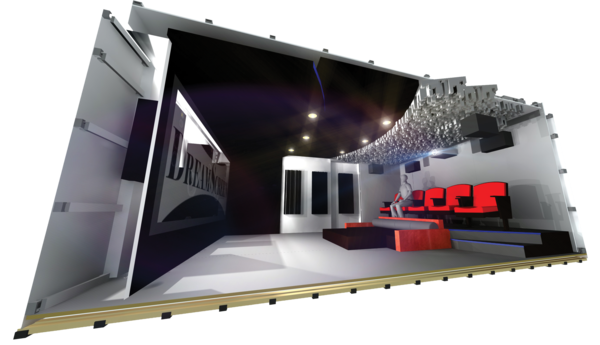
The DreamScreen UltraHD V6 is our 6. generation acoustic transparent (AT) fabric. Throughout the last 10 years we have tested, prototyped, produced and sold a number of technical solutions.
In our opinion, the best possible screen is the one that does not even make its appearance; you simply see what is projected upon it, nothing less, nothing more. By combining a high-gain (0.81@D65*), yet speckle-free and full viewing-angled reflection with high resolution, well contrasted and color neutral performance we really feel the V6 is closer than ever to obtaining that objective. When adding industry-leading acoustical transparency to that equation, the patent pending technology utilized in the DreamScreen UHD V6 is really a potential groundbreaking discovery that may very well be able to alter how we regard AT screens in terms of image quality even directly compared to regularly non-AT screens which has really been the Achilles´ heel of most AT screens thus far.
Using an AT screen in your cinema provides a number of advantages. First; the placement of speakers behind the fabric increases overall authenticity as the sound is actually emitting from where the action takes place. Also, an AT-screen provides a far cleaner surface, increasing the focus on the projected movie rather than the speaker-system. If you install the speakers in a (recommended) baffled setup, you will also increase the sound-level by several dB´s (which is a whole lot as the Decibel-scale is logarithmic). As the size of the screen increases, the acoustical disadvantage of placing a huge, reflective surface in the front increases as well. By other words; the larger TV or regular non-AT projection-screen you plan to install, the more trouble you´re likely to get in regards to controlling the sound-waves bouncing back and forth in your room. Last, but not least, an AT screen allows you to utilize the entire width of your room, maximizing the screen-size to its fullest extent!
The DreamScreen UHD V6 has a matte white surface, bouncing off light from the fabric in an uniform manner. This means that the fabric is reflecting light in a full 160 degree angle, allowing the audience to be seated anywhere in the room without experiencing off-axis light-reduction which is the case for most positive-gain -and filtered screens. Also, this type of screen-material is not maintaining the polarization of incoming light, which - if maintained - may cause visible artifacts when using active 3D-glasses.
Optimally, a dark "batcave" will provide you with the best image-quality from the UHD V6, although immediate reflections surrounding the screen, both in ceiling, walls and floors are the most important to make certain is dark (preferably black) and as non-reflective in nature as possible.
*Please find benchmark tests using the Stewart Studiotek 100 non-AT matte white screen as the reference vs. a regular AT weaved screen, marketed and priced in the upper high-end-segment and the DreamScreen UHD V5 at the bottom of this page. THE V6 HAS NOW BEEN MEASURED IN AT 0.81 GAIN (ABOUT 1% IMPROVEMENT FROM THE V5).
The ultraHD V6 is sold in rolls of 2x4,5m (78" x 177") of fabric (allowing up to a 188" diagonal / 430cm width on a 2.35:1 / CineScope formatted screen or 160" diagonal on 16:9) and grip rails that is made to fit our V5 frames. However, the grip rails are easily adoptable also for DIY-projects where the rails are glued to a DIY wood-stud-frame or an existing, recycled, aluminum frame.
Our development-process has been long, challenging, yet in the end quite successful - in short;
2005 - V1: Dual layer vinyl weave (white) + knitted (grey). Glued. Single reflecting layer.
2007 - V2: Dual layer knitted fabric, grey + white. Glued. Single reflecting layer.
2009 - V3: Single layer knitted fabric grey only. Single reflecting layer.
2011 - V4: Single to three-layered separate layers fabric / synthetic weave. Tensioned, not glued. Single reflecting front layer.
2014 - V5: Three layered weave + knit. Glued. Multiple reflected layers. PATENT PENDING.
2016 - V6: Three layered weave + knit. Glued. Multiple reflected layers. 30% finer front texture and 25% larger size compared to V5. Gain 0.81, from 0.8 on V5. PATENT PENDING.
The science
Our sixth generation AT fabric is a result of the research and development gathered in V1 through V5, where for our two latest generations we found that utilizing several layers that actually reflects in combination rather than one front layer reflecting the image alone would potentially increase both image quality and sound transparency.

Figure depicts how the principle of regular single reflective layer vs. the multiple reflective layers works (International Patent # WO2014175747). We are currently utilizing two reflective layers, but in future revisions we might use even more layers to increase density further.
Utilizing several reflective layers, we have been able to combine a very fine, weaved front surface with two additional knitted layers, one white mid-layer, as well as a black backing layer.
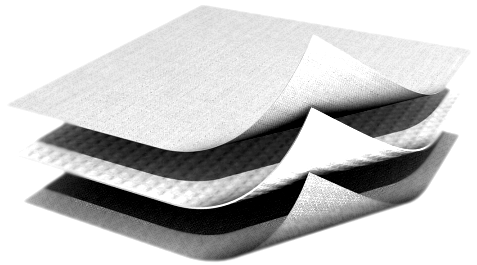
The secret to our excellent image-quality and reference-level AT is the use of several layers of different types of fabric that reflect in combination
The thin, weaved front-layer would not have worked alone, simply because the reflection of light would be too low. However, in combination with a backing-layer that assists on the reflection, the total amount of light-reflection is higher than ever before.
The "magic" that makes this technique unique is the fact that upon reflection, our eye only sees the structure from the front-fabric, even from right in front of the screen, although the layer behind is reflecting light as well. The front-layer works as a filter of kinds, providing the highest density, resolution and sharpness possible.

The V5 UHD is located at the top, and as you can see in comparison to a regular weaved AT screen on the bottow, depicted from close up you can see right through the primary layer. NEW UPDATES PICS FROM THE V6 WILL BE TAKEN AND POSTED AS SOON AS THE FABRIC IS AVAILABLE.
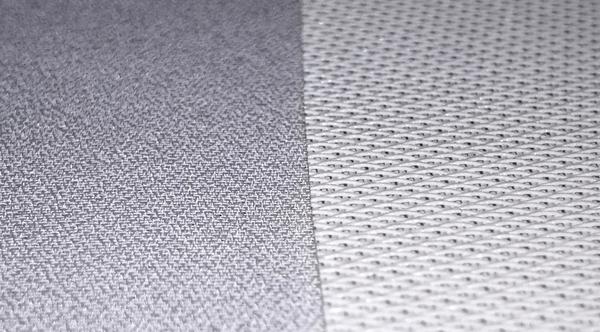
However, when we project light upon the surface, only the first layer of the DreamScreen V5 UHD (left) reflects visible structure, providing far higher density and thus increased reflected sharpness and resolution compared to the regularly woven AT screen to the right. Please note that the seemingly apparent "speckle" from the DreamScreen is caused by oversaturating contrast and sharpness in Photoshop in order to display the structure more clearly. In actuality the fabric has a superb matte surface / reflection without any speckle / reflective artifacts. NEW UPDATES PICS FROM THE V6 WILL BE TAKEN AND POSTED AS SOON AS THE FABRIC IS AVAILABLE.
The second layer is also an essential part of the buildup. As the first layer provides the structural sharpness required for the image to be as seamless as it is, the second layer mainly needs to assist on light-reflection. As such, we are able to use a far rougher type of fabric that is knitted instead of weaved. A knitted fabric, often used in speaker-grilles, allows far more sound to pass through. However, as we found in our 3. generation fabric using only knitted fabric; the density and thus resolution and sharpness is not sufficient. In combination with the front, weaved layer, however, the knitted fabric has found it´s rightful place in the grid; allowing sound to pass through very effeciently while reflecting (loads of) light!
The black backing layer increased perceived contrast and is also utilizing the knitted type of fabric so that sound will pass more effeciently.
The result is a sharp, dynamic, high-resolution image free from common artifacts such as moiré and visible structure even from very short seating distances (2m or less). We have tested both LCD, DLP, SXRD and D-ILA, currently in resolutions up to 4K from a number of distances, and there is simply no way the extremely fine-weaved surface will be able to create interference with the projected grid, thus create moiré. As it is the front-surface that provides the visible reflective surface to the viewer, even as resolutions increase to 8K or beyond, you can rest assured that the V5 UHD fabric will keep providing a moiré-free reflection.
On our UHD V6-fabric we have managed to increase the texture density by 30% and thus increasing sharpness even further.
The AT is also dramatically improved compared to our previous generations using the multi-layered method as the weaved front layer, which is really the main absorber of audio-transparency, can be made super-thin and thus significantly more AT than previous generations of fabric using a single reflective surface.
Glued, not tensioned layers
Although we have glued the layers in both our 1. and 2. revision, we did not on our 3. and 4. version as we simply did not manage to get the results we wanted on the primary production-runs. Gluing the layers is a complex process that we finally have mastered in our 5. generation of fabric. Imperfect tensioning, resulting in space between a front, single-reflecting layer and its black backing layer is quite damaging to both image-contrast and sharpness, especially on sharp contrasted-objects such as a starlit sky. Using several reflective layers made it even more crucial to keep the layers perfectly tensioned. On the V5 UHD-fabric, there is no space between any of the layers which in turn creates a sharper and more contrasted reflection than is the case when trying to manually tension the layers of fabrics.
The integrated black backing, in addition to increasing perceived contrast, absorbs excessive light which in case might have reduced sharpness and given "halo" artifacts if light is reflected on a wall behind the screen and back.
Super flexible = quick & perfect installation
Installing a regularly weaved AT fabric can be a real challenge. When you are to tension up a separate black backing layer as well, often made up of the same stiff PVC-weave, it is very hard to avoid distance between the layers. As the V5 is made up of super-flexible, pre-attached layers, it´s really easier than ever to tension the fabric perfectly onto even heavily curved frames using the included flexible grip rails.
You can even glue the included grip rails to any wooden or existing aluminum frame if you do not purchase one of our frames but rather recycle your current one. If you do want a new frame, however, our DreamScreen-frames includes fitted tracks, thus no need for glue.
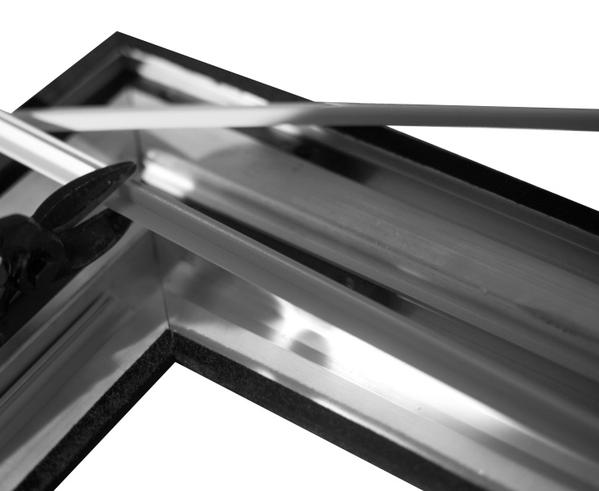
1: CUT RAILS
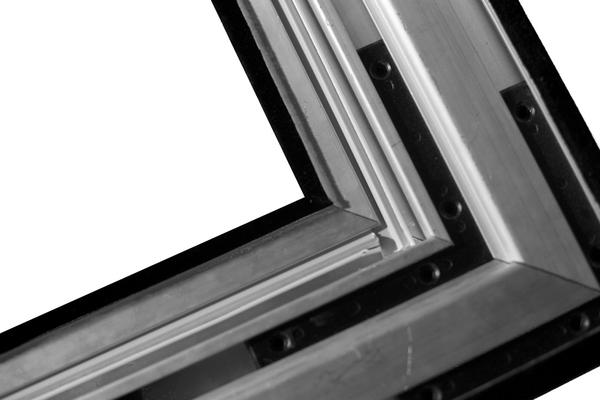
2: INSERT (OR GLUE)
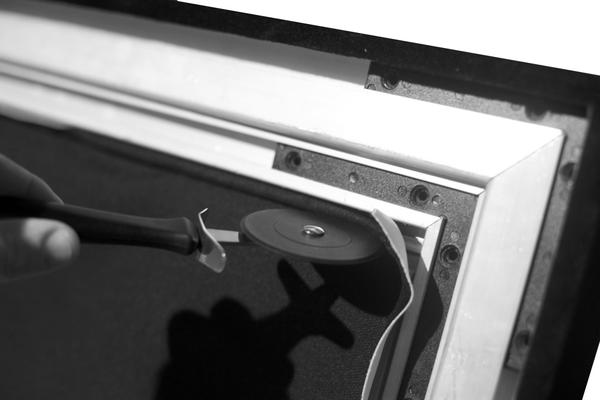
3: ATTACH FABRIC
Installing the fabric is very easy and fast. First, you cut the grip rails to fit the frame. Then you attach the fabric, first the top long-side, then the bottom long-side and finally the two short-sides. You can use either a pizza-cutter or a spatula to insert the single-piece-fabric into the rails. After you have tensioned the fabric you cut off the excessive parts with a regular scissor.
Speckle free, full viewing-angle, high brightness reflection
One of the main issues with a number of projection-screens - especially those using a positive gain-factor, but also a number of ordinary gain fabrics - is the speckle phenomena. This is a quality-reducing incident that we have made huge efforts on avoiding. Speckled surfaces project a reduced resolution in brighter areas, as well as clear structural noise. Positive gain also reduces the stability of the viewing-angle, which is not the case for the UHD V5 utilizing a matte, fully 160-degree constant-gain reflective surface.
For our fifth generation DreamScreen UHD we can proudly state speckle is no longer an issue, although the gain-factor is at an impressive 0.8. The gain of the UHD V6 has been measured to a 1% increase from the V5, now at 0.81.
 Example of a (heavily) speckled (left) vs. a non-speckled (right) reflection
Example of a (heavily) speckled (left) vs. a non-speckled (right) reflection
Color neutrality and D65 compability
First, let´s try to clear up a misunderstanding that seems to be quite common these days; there are no "D65" screens available that would save you the calibration of your projector. As every projector, although some being quite close to D65 from factory, outputs a less than optimal color gamut and greyscale, you always need to calibrate your projector to fit the specific screen material that is used. There are no actual standards on how a projection-surface should look like in terms of reflection other than the fact that it should reflect as much D65-calibrated light as possible throughout the entire greyscale. As such, the screen needs to reflect as close to 6500K as possible and also make certain there are no color-shifts in red, green or blue that would require the calibrator to compensate by reducing the output of the other color-channels to balance the RGB-output.
The DreamScreen UHD V5 has been carefully tuned to make certain as much light as possible is maintained from the projector when calibrated to D65. Although providing charts that demonstrate that the V5-fabric is able to reflect D65 has little value as ISF and THX-certified calibrators have already calibrated hundreds of projectors to D65 using this fabric during the last year or so, we have performed comparative tests in terms of light output available post-calibration from a given set of screen materials. As initial measures indicated, the DreamScreen UHD V5 measures about 0.8 gain compared to the regular non-perforated Stewart Studiotek 100, which is listed at 1.0 gain. Some loss of light-reflection is to be expected on an acoustical transparent screen that is matte white to begin with, and a level of 0.8 is actually very impressive in such regards. The regularly weaved acoustical transparent screen that we are benchmarking the DreamScreen to is rated by the manufactorer at 1.0 gain. However, we are measuring the reflection of this fabric to about 0.8 gain compared to the Stewart Studiotek 100 as well, thus in reality the same as the DreamScreen. This is consistent with our assumption that some producers, perhaps especially those of acoustical transparent screens, tend to inflate their listed gain-levels somewhat. Please see measures and methodology listed below.
Although the regularly weaved AT fabric we have benchmarked the DreamScreen UHD V5 towards is markedet, sold and generally perceived as a higher-end sound-transparent fabric, we will certainly do additional comparative measurement to other AT screens in the future.
TECHNICAL MEASUREMENTS / PROOF OF CONCEPT
ACOUSTIC TRANSPARENCY V6
Methodology is further elaborated below, but in short we have build a custom cabinet in highly rigourous MDF, insulated with absorption-material and a constant placement for the measurement-microphone. We use REW to analyse the A/B-measures with and without the fabric.
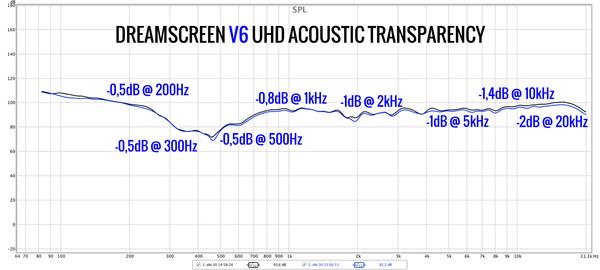
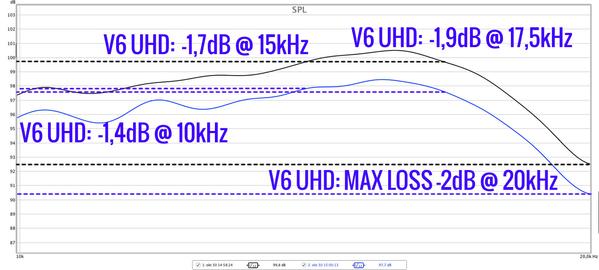
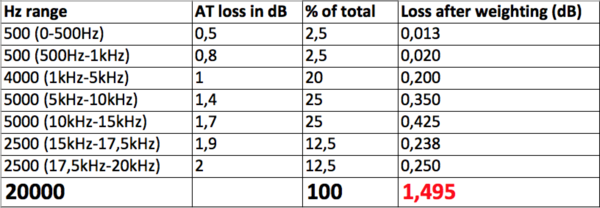
Measurements include all three layers of the V6-fabric (including the integrated black backing). 1/12-smoothing. Measurements indicate class-leading acoustic performance with a max drop of 2dB@20kHz and an average drop of just below 1,5dB.
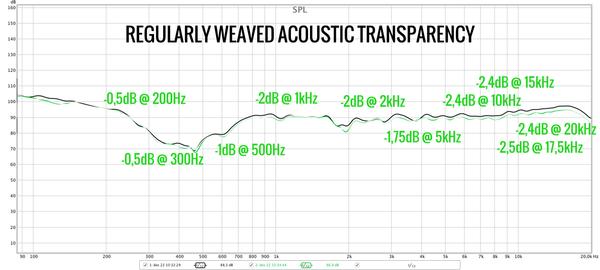


These measurements are made of a regularly weaved fabric. The measures are relevant only in terms of a general comparison as AT test-results are heavily dependent on methodology. Even the slightest movement of the measurement microphone may alter the results and the measurement box also introduces several cancellations and boosts. The producer of this particular regularly weaved AT fabric is rating it at 1.5dB maximum loss using front layer plus backing layer, and while our measurements indicate a somewhat higher (maximum) loss of about 2,4dB their average loss is still about 2,25dB while the DreamScreen V6 is about 1,5dB using the same calculation- and measurement method. The regularly weaved AT fabric is measured using (the required) black backing layer in the same measurement-cabinet, A/B-measured vs. the V6 UHD.
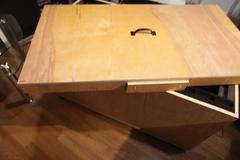
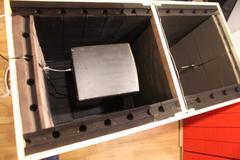
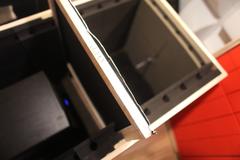

Our measurement-cabinet is fully isolated using a studio monitor to output the test-sweep to a calibrated miniDSP U-MIK microphone using REW-software on our mac to analyse the measurements. The microphone as well as the studio-monitor remains at the exact same location during measurements of each fabric to ensure repeatability. Several separate sweeps are made to make certain each measurement is fully repeatable. The various speaker fabrics are tensioned to an interchangeable frame and placed about 15cm in front of the monitor and about 40cm from the microphone. However, even a slightest movement of the microphone may alter the results, and the cabinet also introduces cancelleations and boosts due to its inherent dimensions. These measures are therefore first and foremost relevant in comparing the V6 to a regularly weaved type of fabric.
GAIN FACTOR - CURRENTLY OF THE UHD V5, BUT THE V6 HAS BEEN MEASURED IN AT 0.81, ABOUT THE SAME AS THE V5.
In general, many producers of AT fabrics seem to inflate their listed gain-levels. Stewart, however, has been a studio-reference for many years, and thus we assume their gain-levels are correctly listed, and as such we are using their Studiotek 100 as our reference.
When a matte white AT screen is listed to obtain a gain-level of 1.0 there is simply a logical breach somewhere. When adding holes for the sound to pass through a fabric, the consequence has to be that light-reflection is reduced accordingly unless the fabric has a more positive gain-factor than 1.0 to begin with. Gain-factors higher than 1.0 introduces a number of known artifacts such as reduced viewing-angle and potential speckle.
Although our measurements confirm our assumptions on the correlation of gain and sound-transparency, the D65-calibrated reflection-level of 0.8 found in both the DreamScreen UHD V5 and the regularly weaved AT screen is still very good. This is the level normally found in regular non-AT grey screens, and although both the DreamScreen and the regularly weaved AT screen has a matte white surface, the use of black backing layers actually makes the screen appear somewhat "grey" as it mixes in the backing to the reflection-matrix and thus - to some degree - boasts the black-level performance as is the case for grey-nuanced screens.
The calibrator that did these measurements is Gorm Sorensen, a Norwegian THX and ISF-certified calibrator, performing hundreds of calibrations every year. Calibrations are made in a «simulator», which is in essence is a batcave, covered in black fabric all over to make certain reflections will not reduce measurement-accuracy.
The measurement meter is a Klein K-10A referenced by a Photo Research PR670 spectroradiometer. Calman pro software.

Gorm Sorensen, an ISF and THX-certified professional calibrator, is performing the measurements
First, we calibrated a Sony VPL-HW55 projector to the Stewart Studiotek 100 @D65 (matte white, gain 1.0, non AT). The dE averaged at 1,1 on the Studiotek, and we did measurements of the light-reflection on the entire grayscale. The Studiotek topped at 361 candela / m2 at 100% and 231 at 80%.
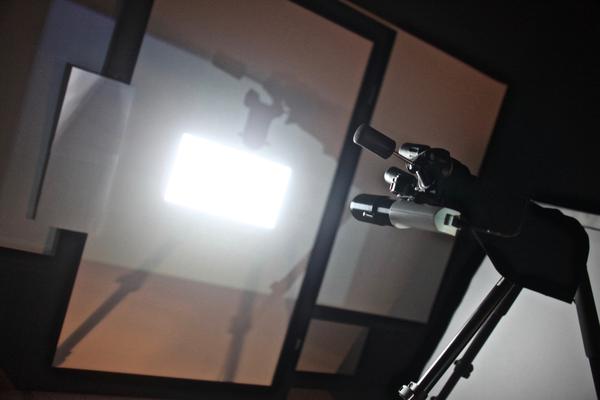
First, the projector is D65-calibrated on our reference fabric, the Stewart Studiotek 100
Then, we placed the regularly weaved AT material directly on top of the Studiotek without any movement of the meter. The fabric reflected D65 with a dE of 1,12 after re-calibration to this particular fabric and reflected a maximum of 271 cd/m2 at 100% IRE and 173 cd/m2 at 80% IRE. The producer indicates a gain of 1.0, while our measurements clearly indicate that our assumption of inflated values are correct. Their measured reflection, calibrated at D65, is about 75% of what the Studiotek 100 reflects, by other words a gain-factor of about 0.75. Some light-reflection may be lost due to the D65-calibration, but certainly not as much as 25%. Our estimated gain-factor of this fabric is 0.8, leaving about 5% margin to (lacking) D65-corrective loss of light.
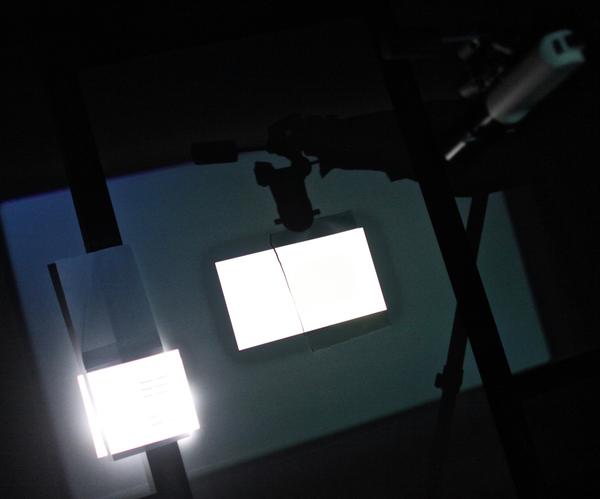
The regularly weaved AT screen fabric and then the DreamScreen UHD V5 is henceforth attached directly on top of the non-AT Stewart fabric to make certain there is as little distance-variations as possible.
Last, we measured the DreamScreen UHD V5. With an average dE after calibration of 0,85, the V5 measures 276 cd/m2 at 100% IRE and 176 cd/m2 at 80% IRE, about 76% of the 1.0 gain of the Studiotek and thus a gain-level of about 0.8 if taken into account that a little light may be lost due to the D65-calibrated reflection.
Conclusion
After calibration, which may take a small toll even from a neutral "D65" screen-fabric, the gain-level of the DreamScreen is at a comparable level of about 0.8 gain, the same as the regularly weaved fabric which is rated by the manufacturer to provide 1.0 gain. The regularly weaved fabric used to benchmark the DreamScreen is marketed and priced in the upper high-end segment, priced several times higher than the DreamScreen.
Calibration data results Stewart Studiotek 100 calibrated at 6500K (reference)
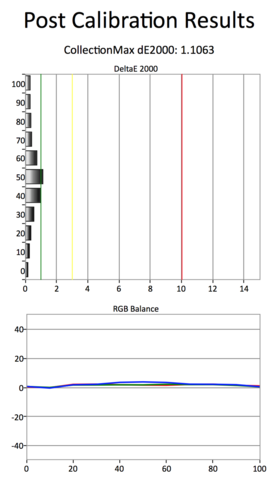
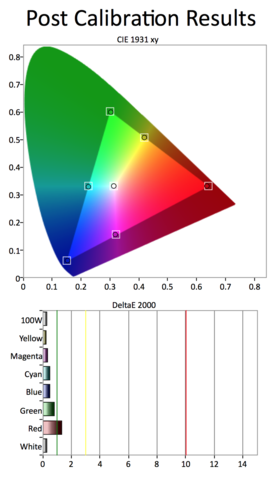
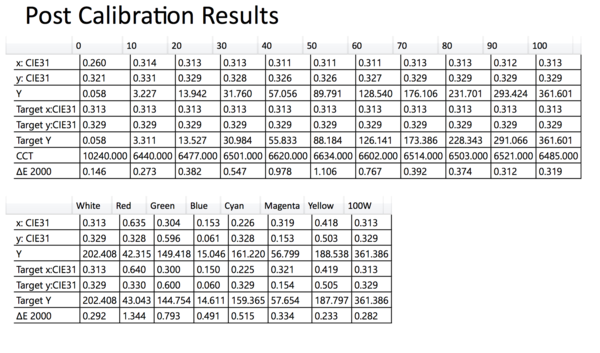
Calibration data results of the regularly weaved fabric calibrated at 6500K (test fabric #1)

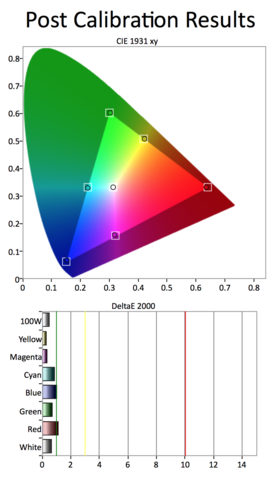

Calibration data results DreamScreen UHD V5 calibrated at 6500K (test fabric #2)
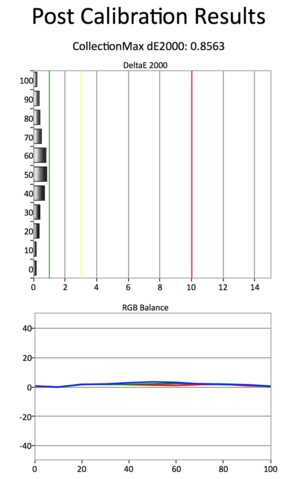
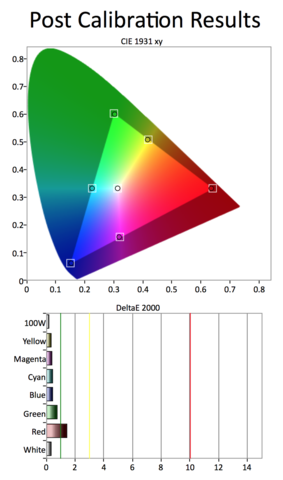
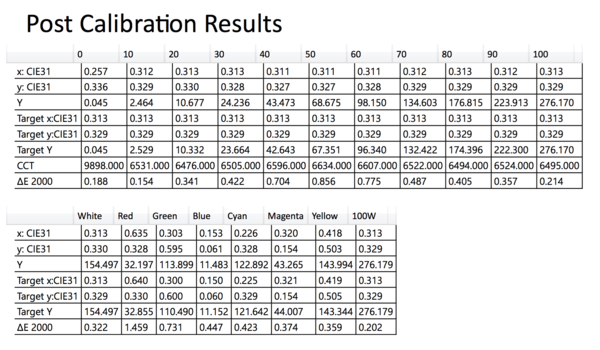
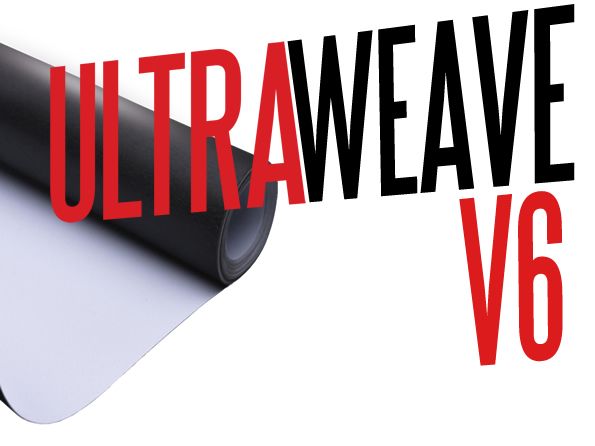
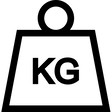
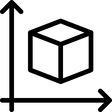
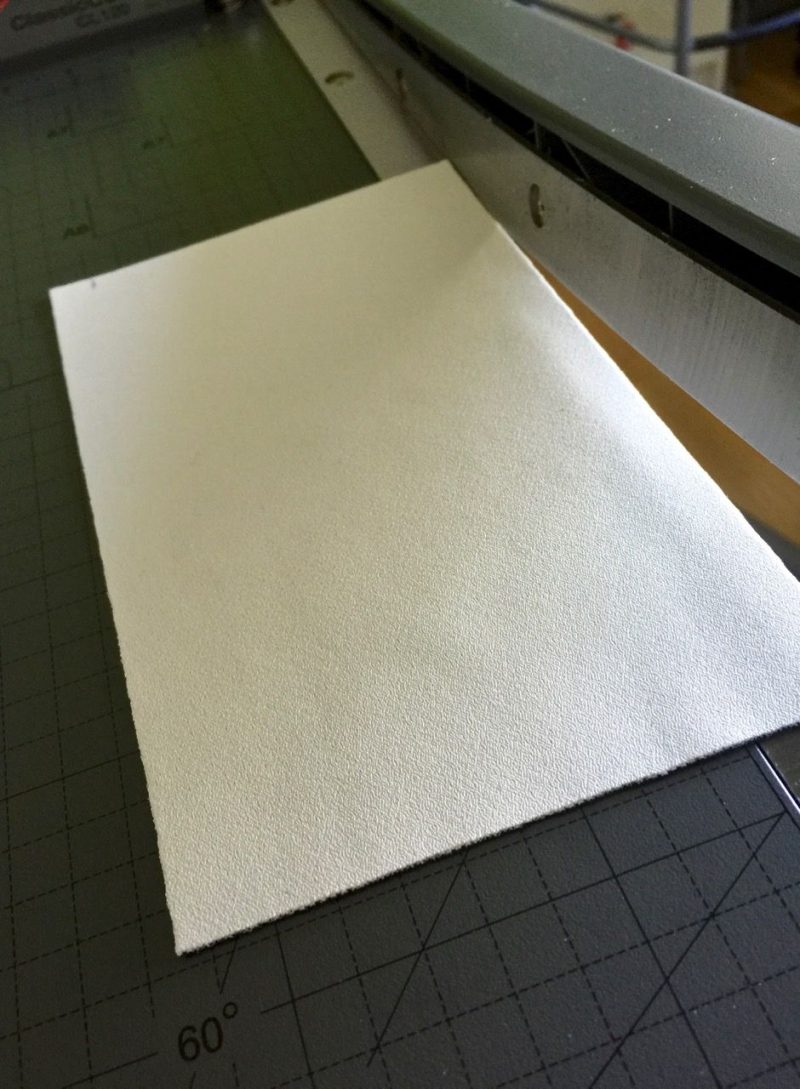
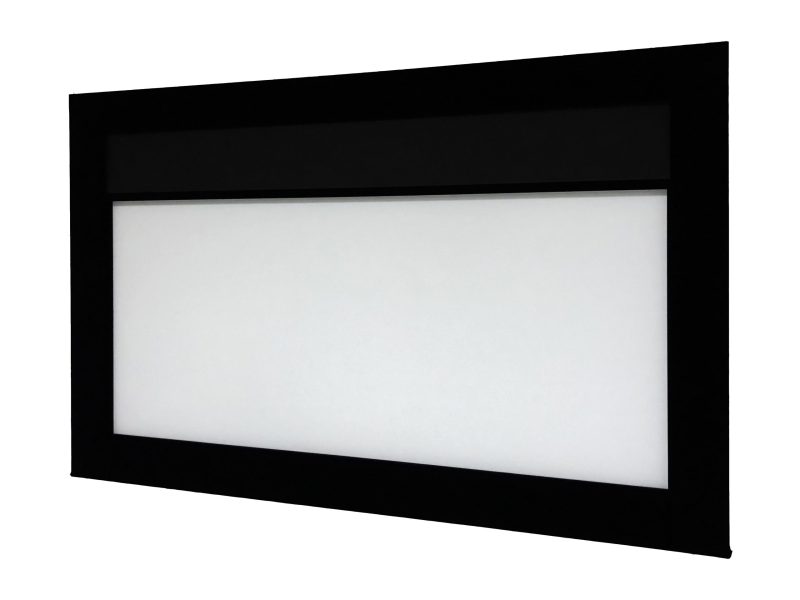
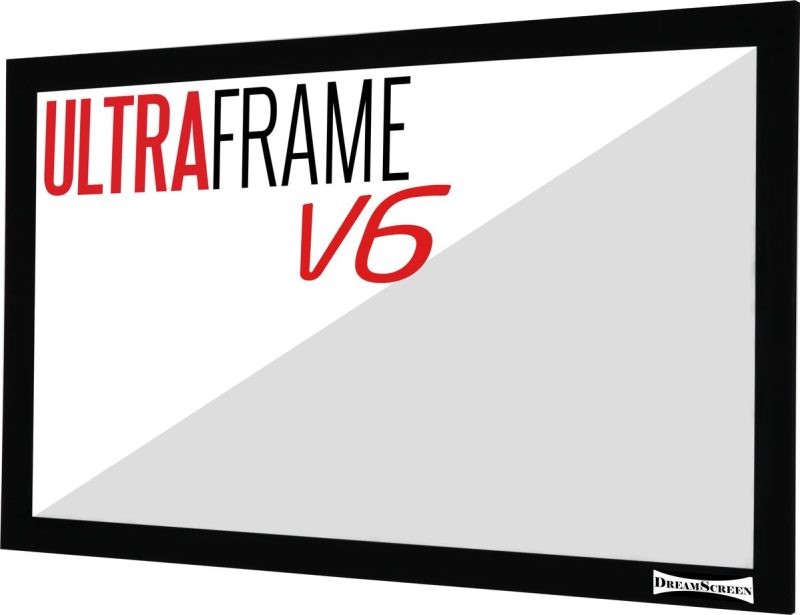
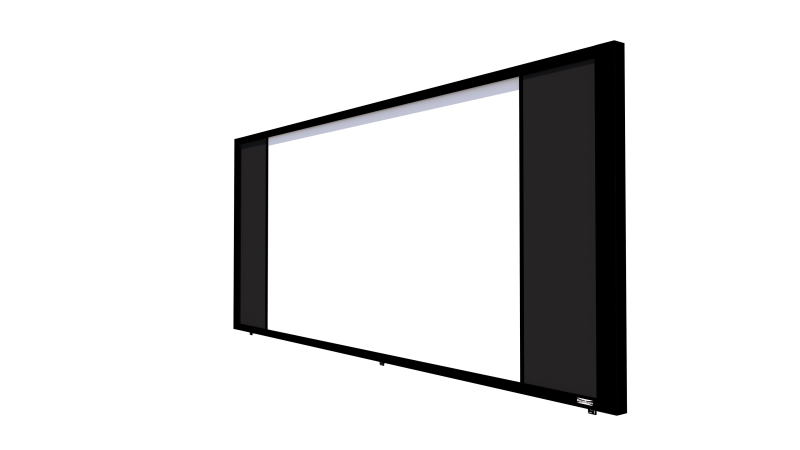
Omtaler
Det er ingen omtaler ennå.